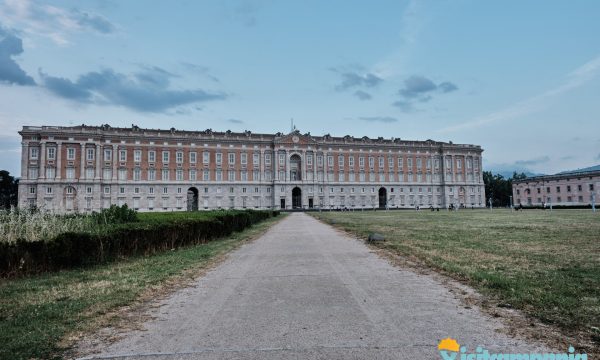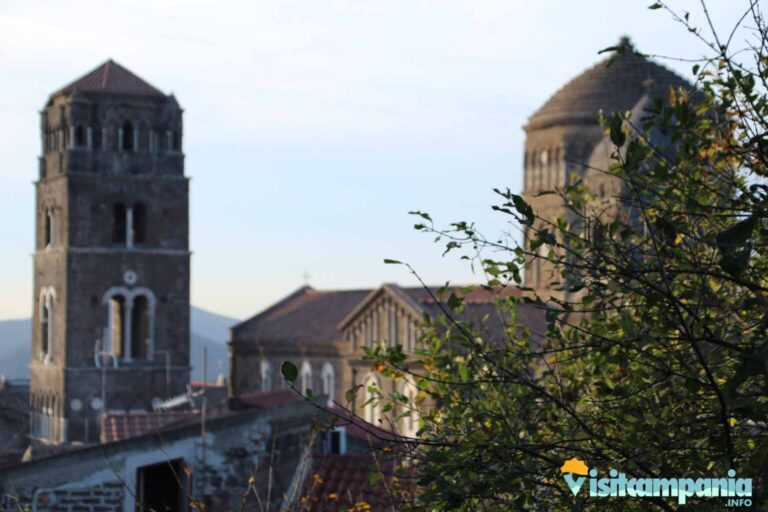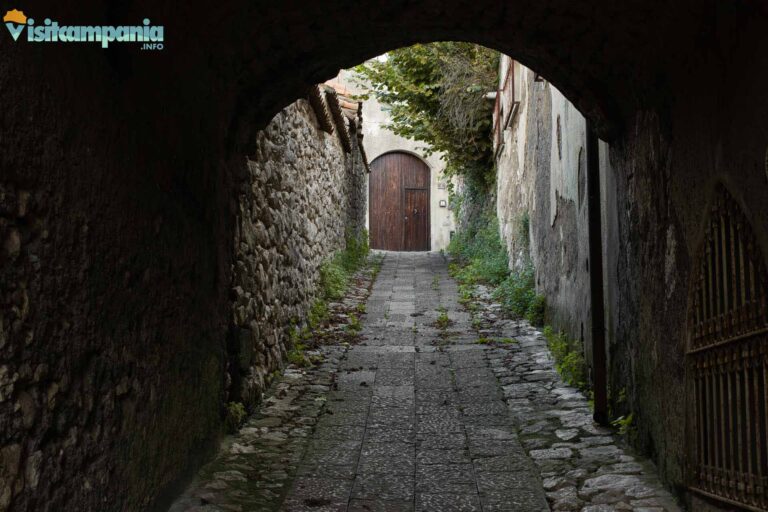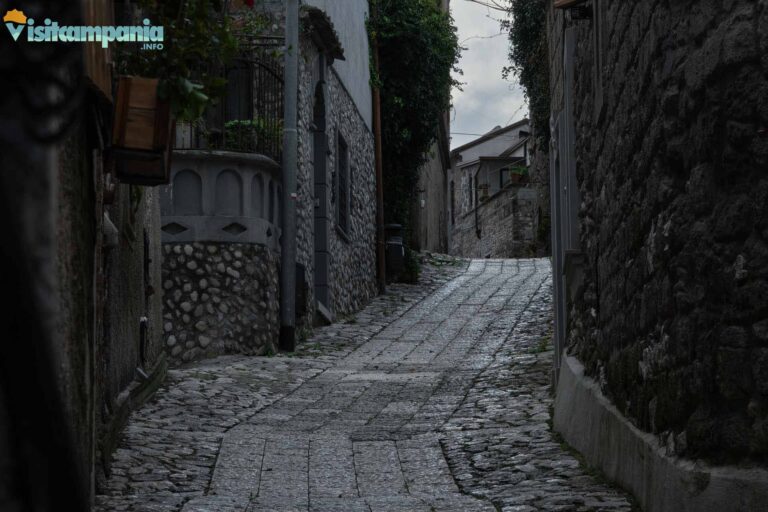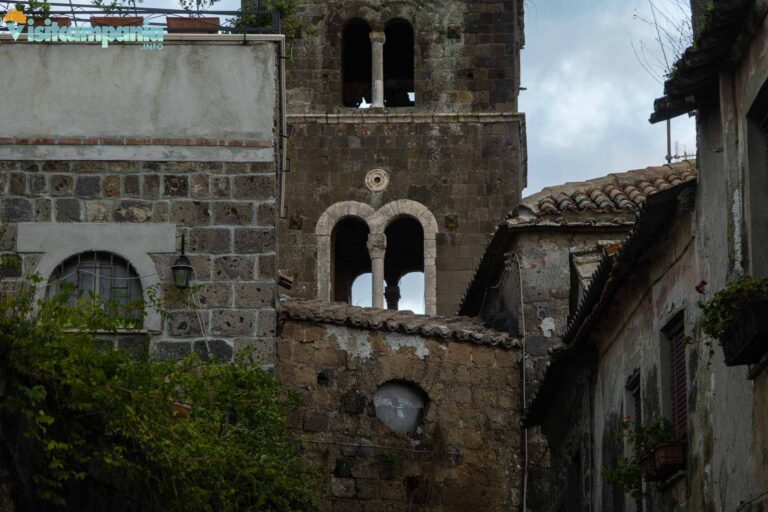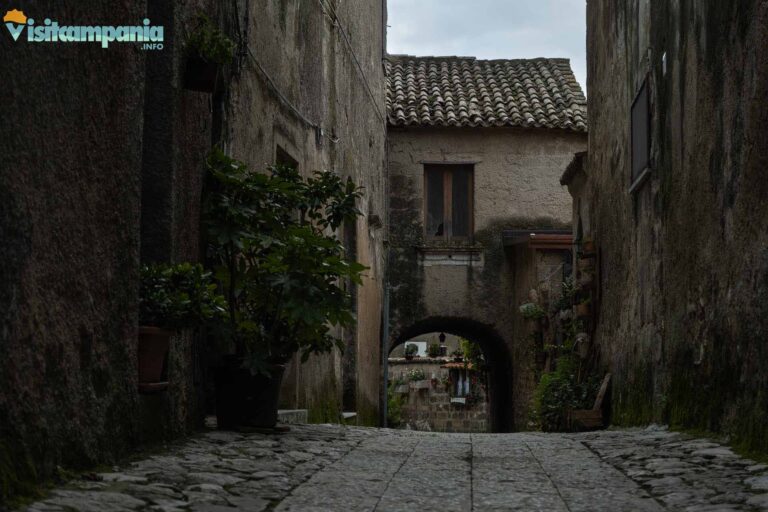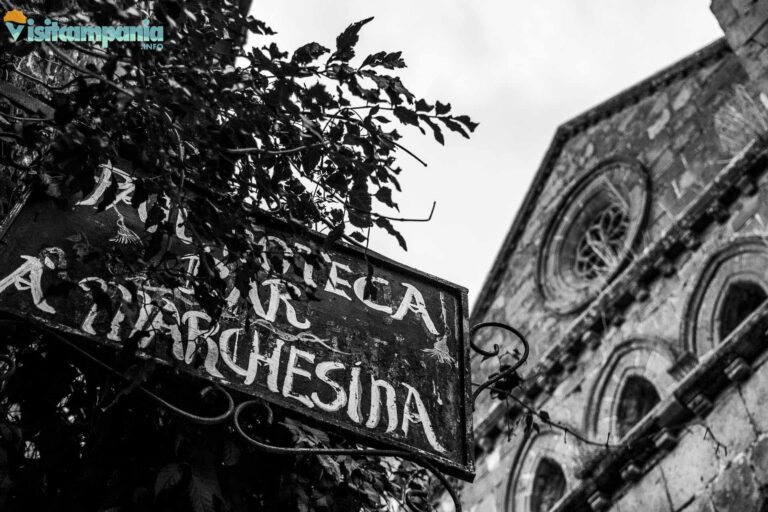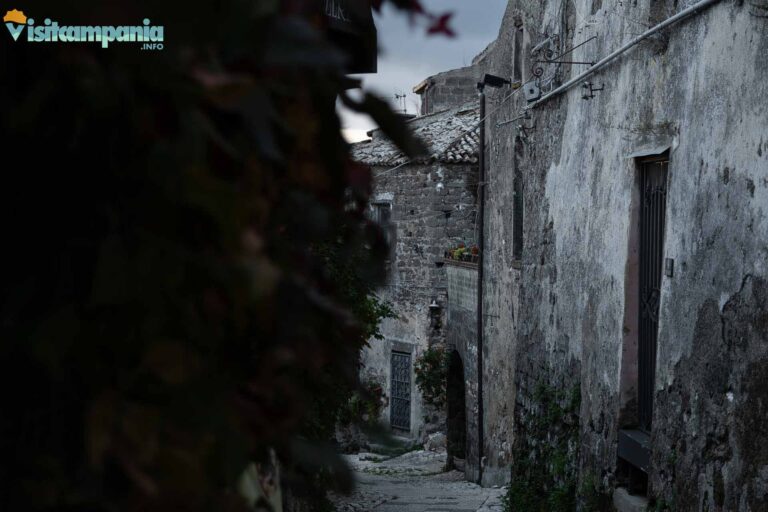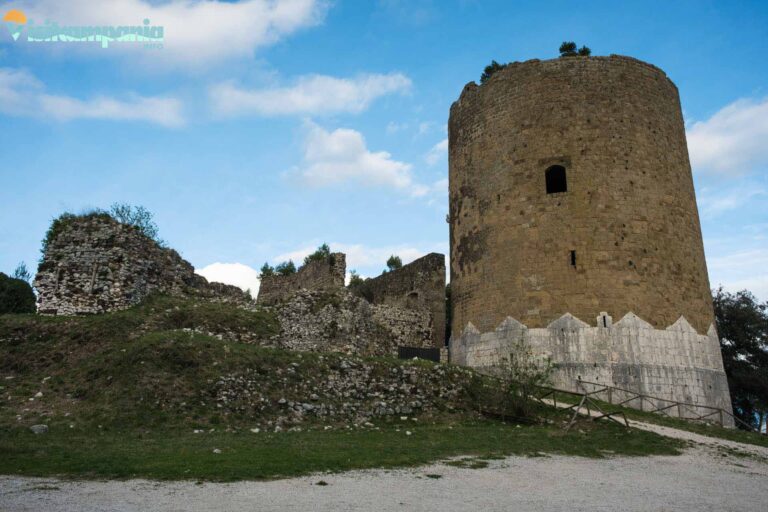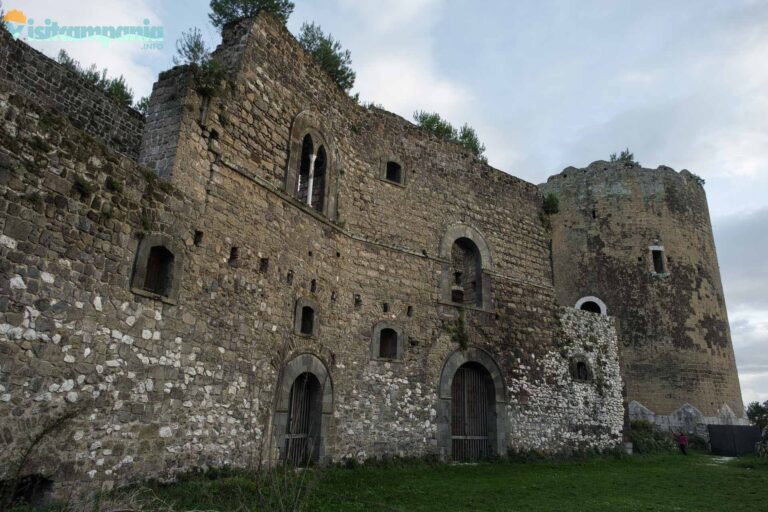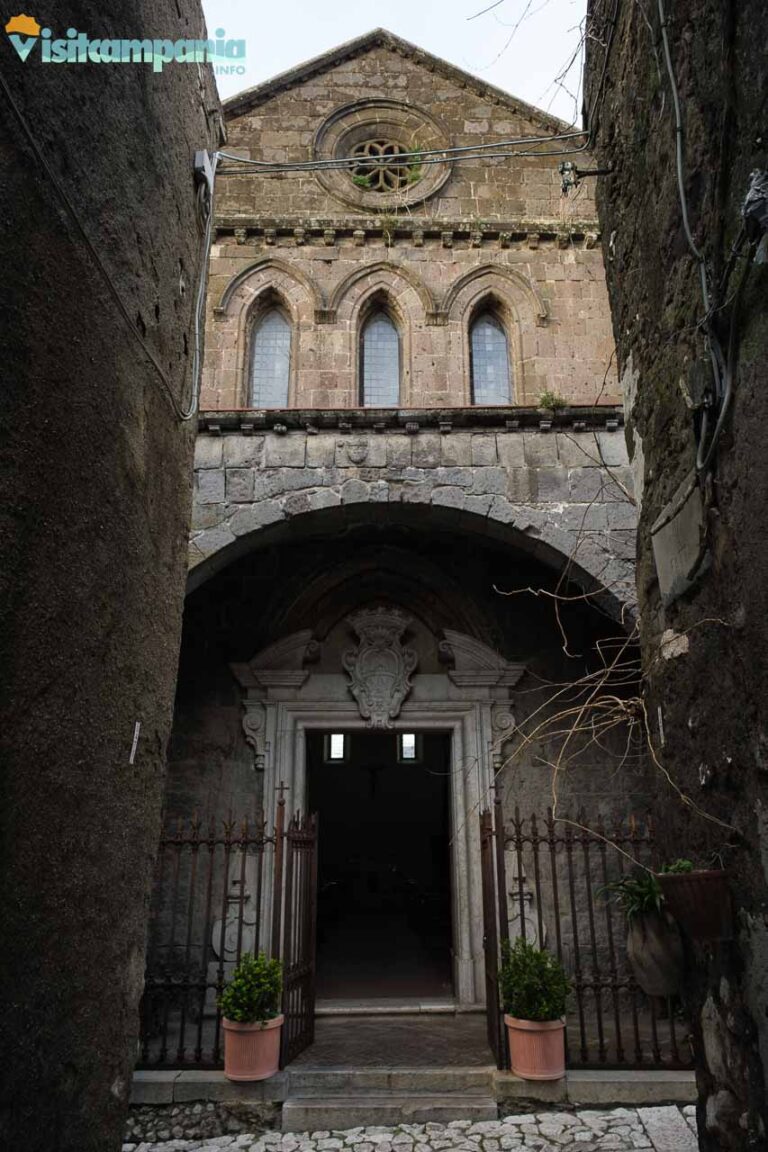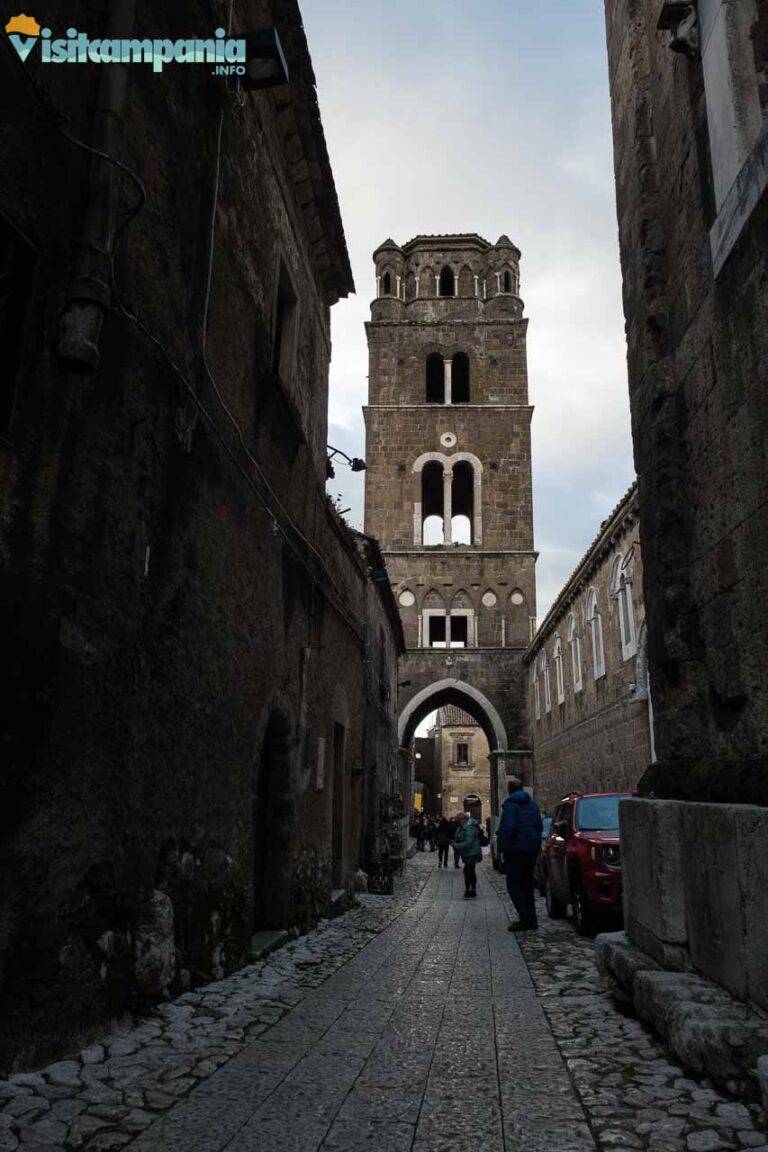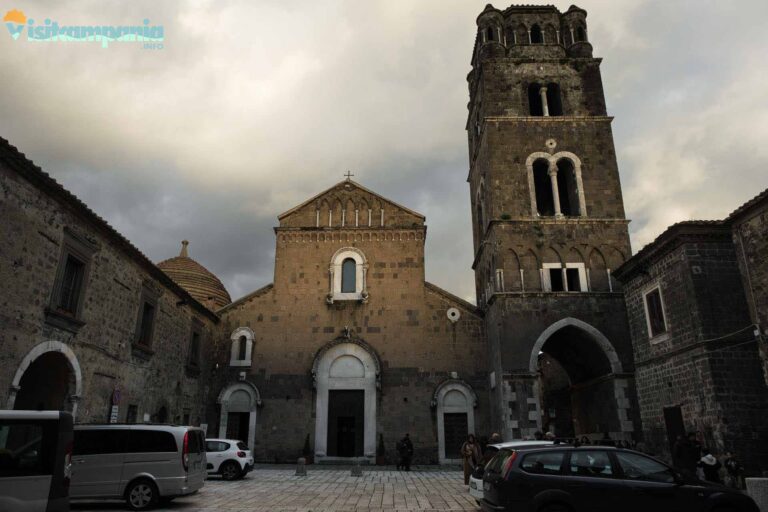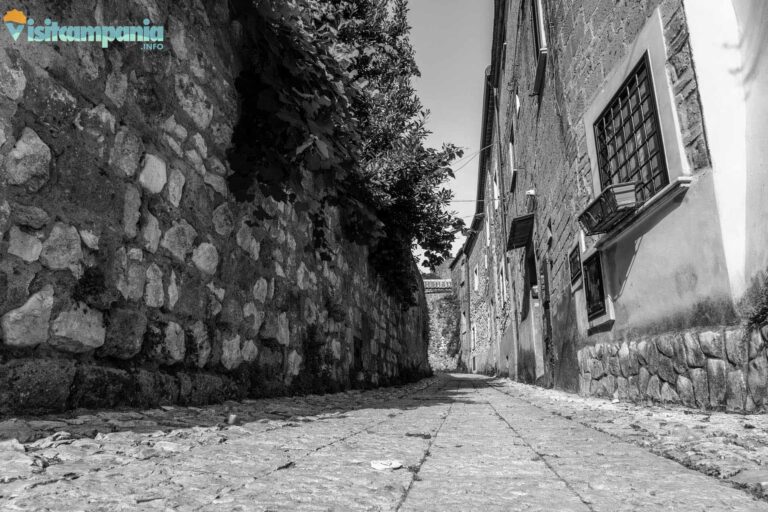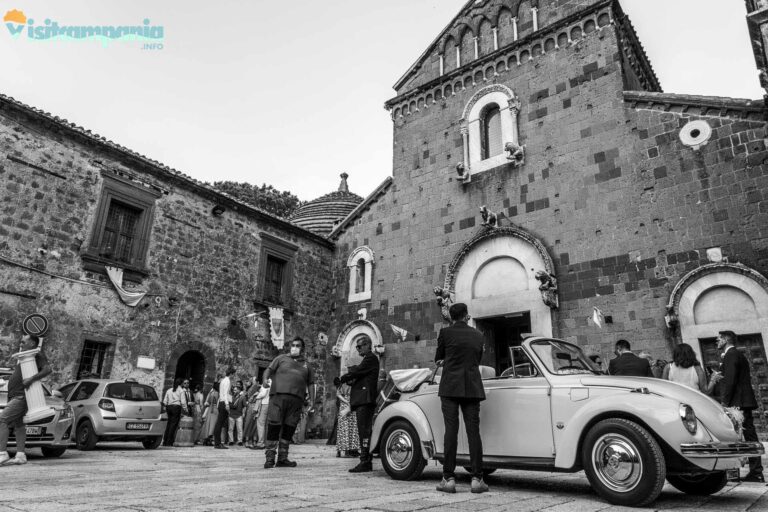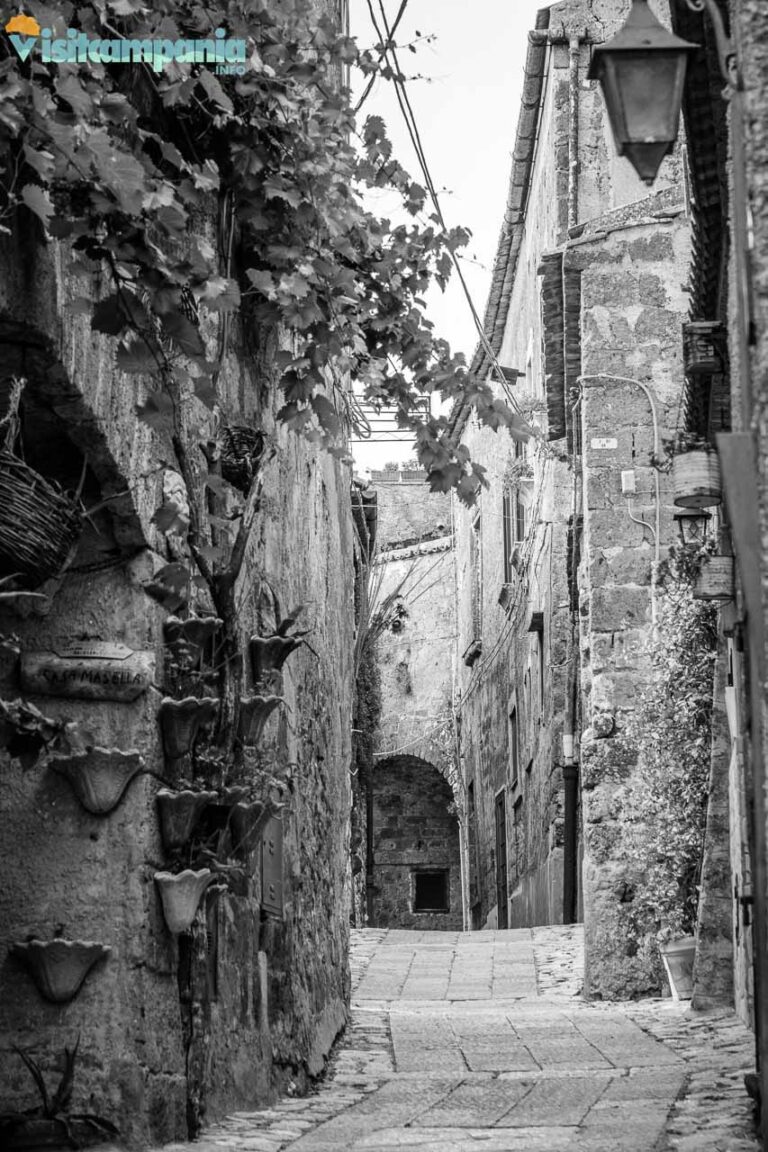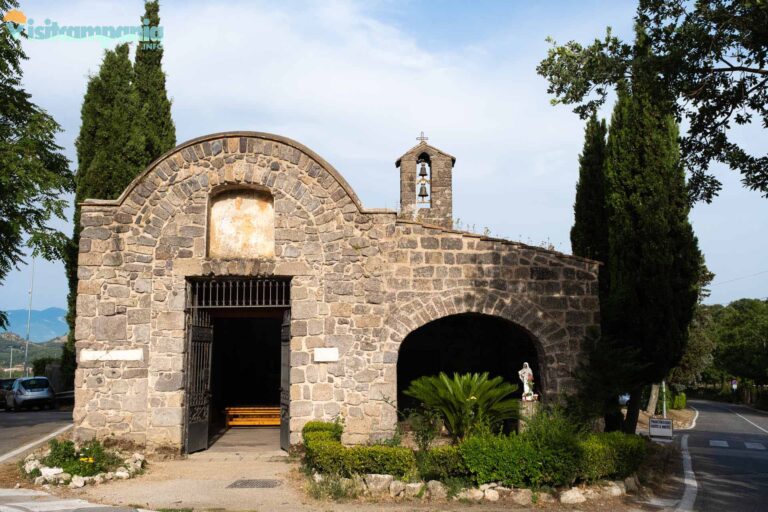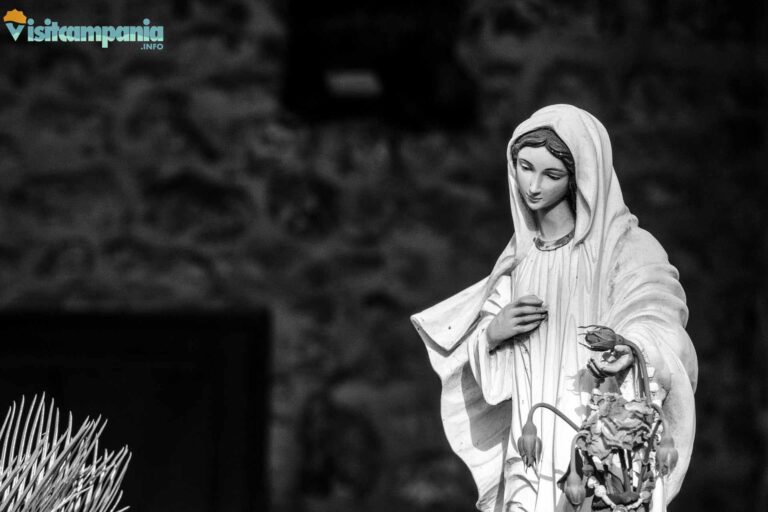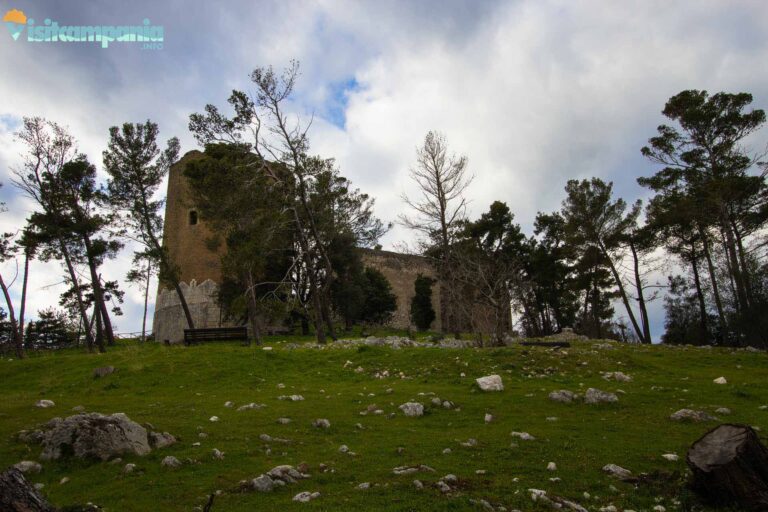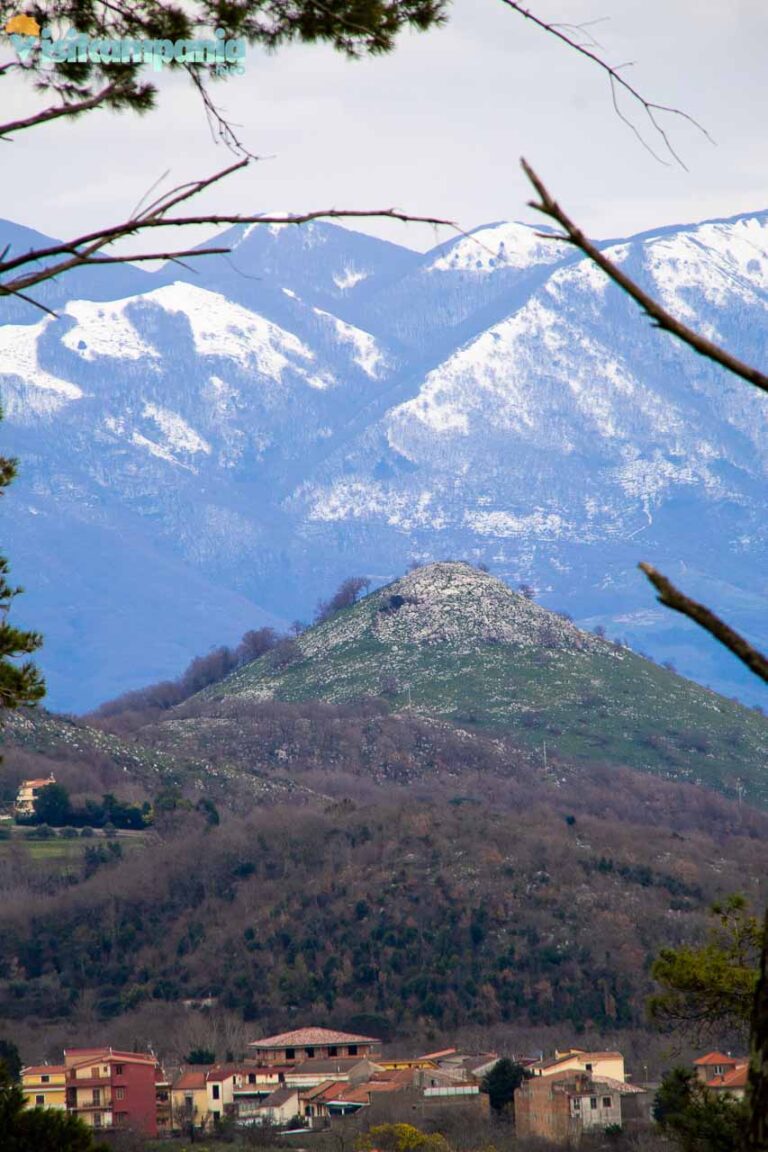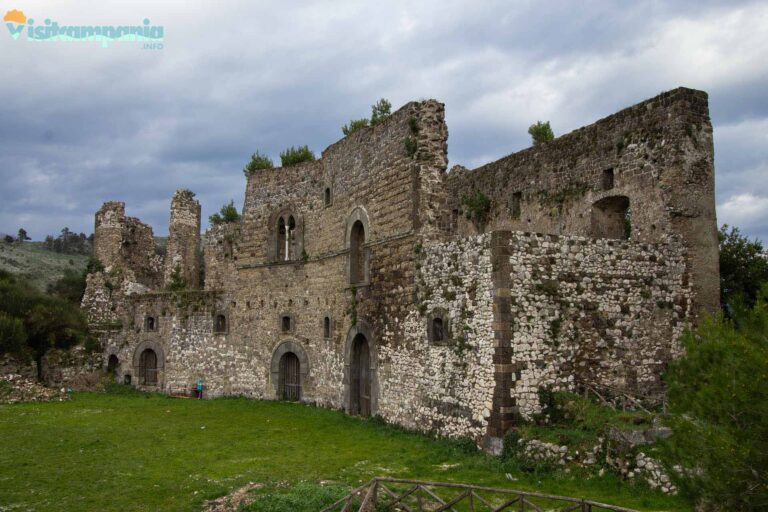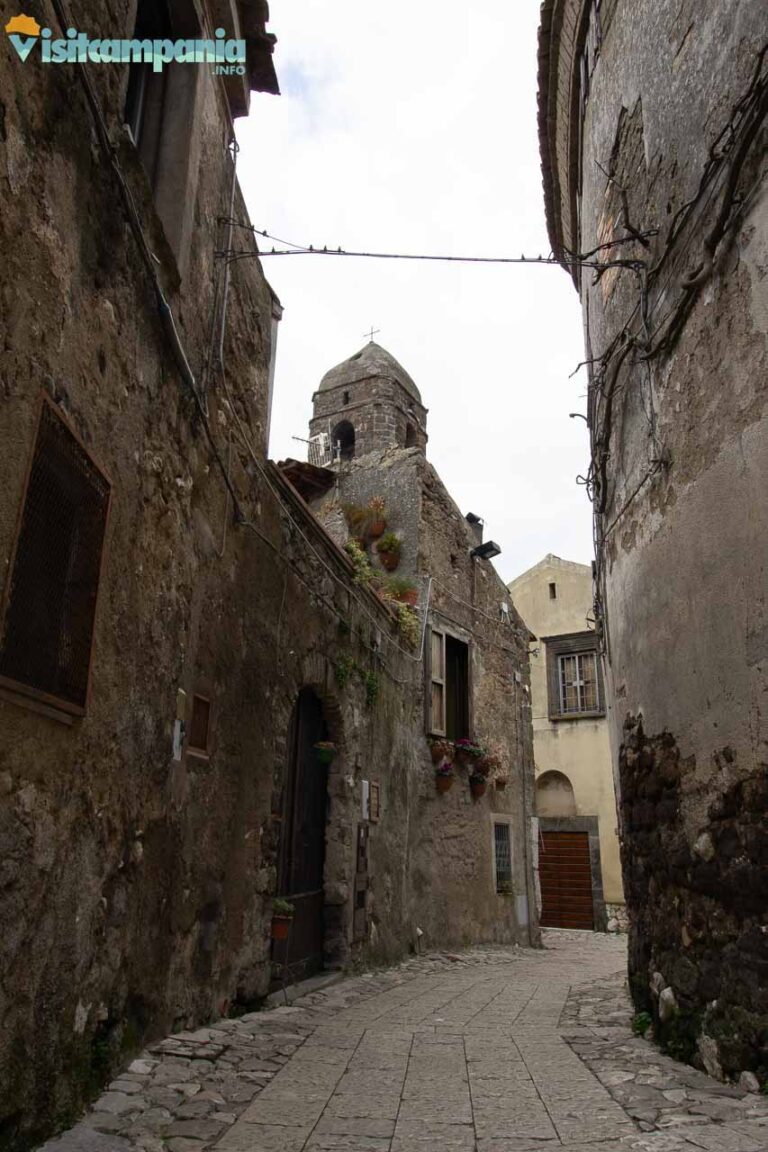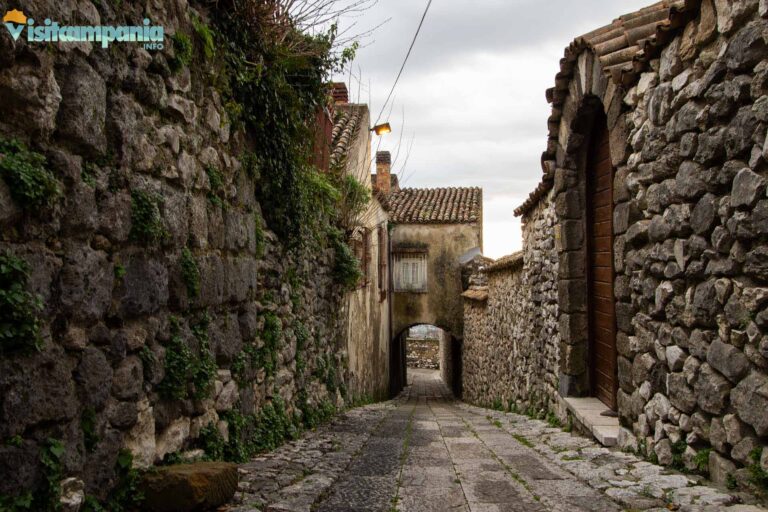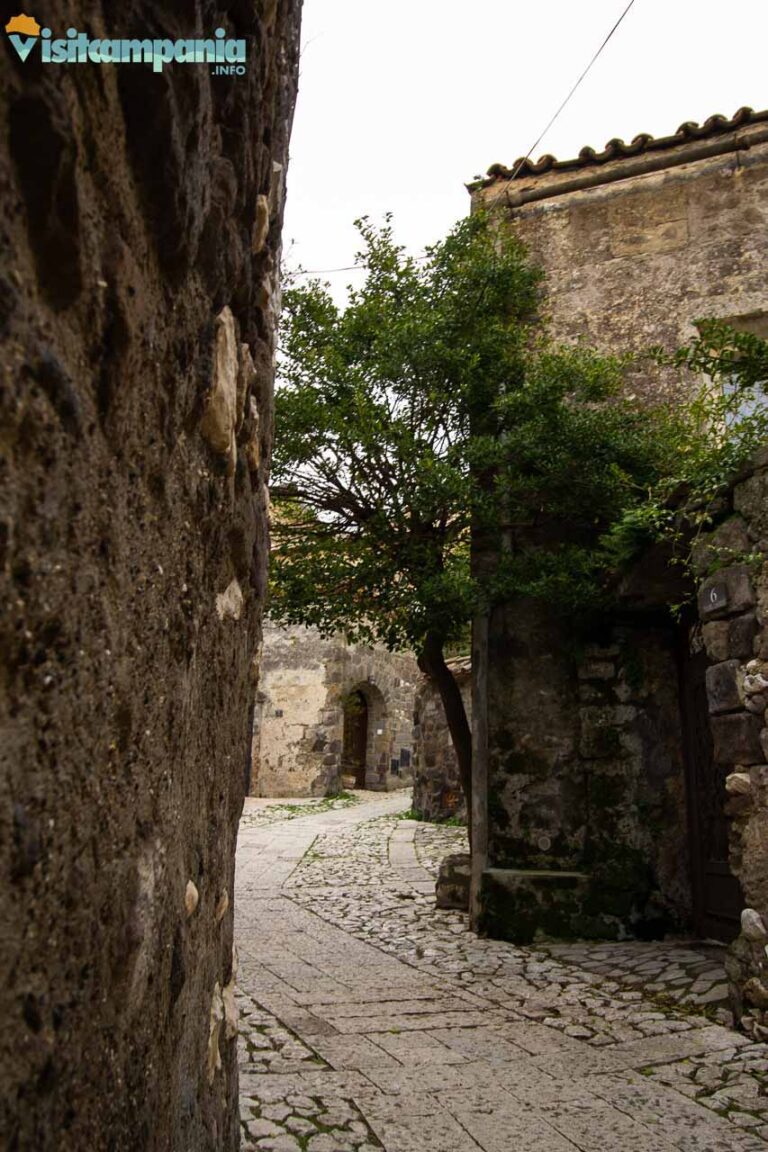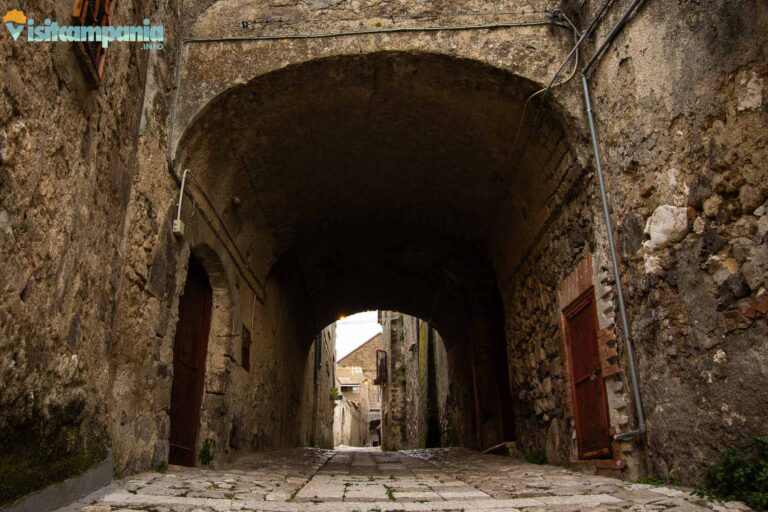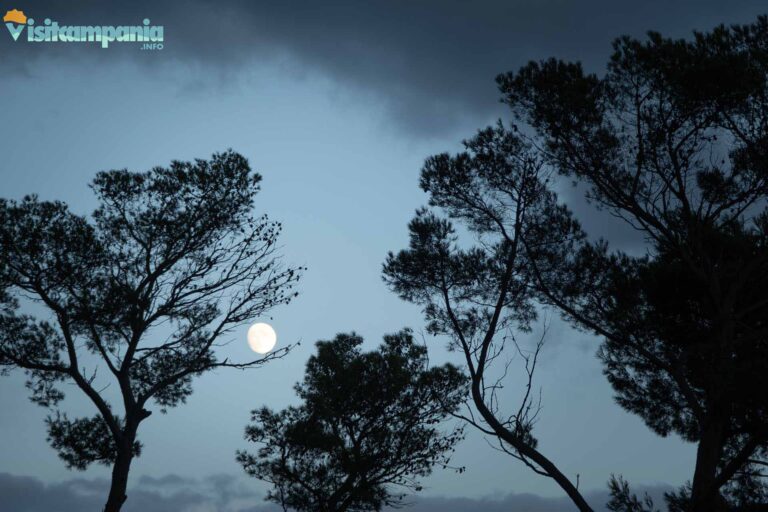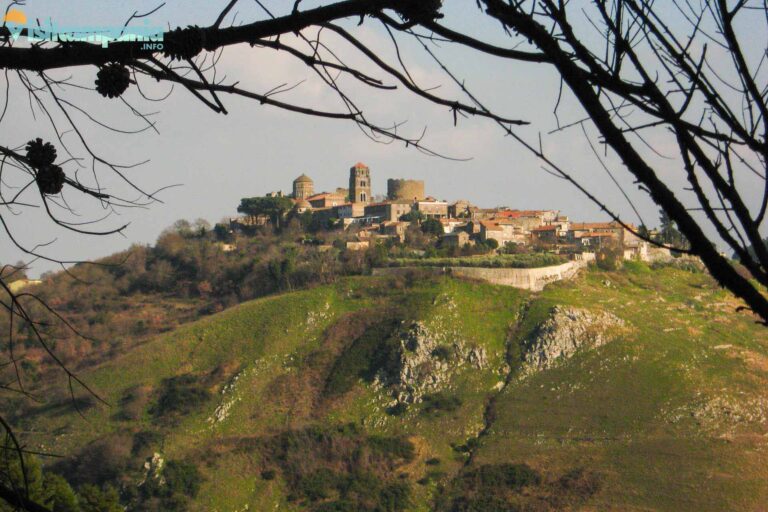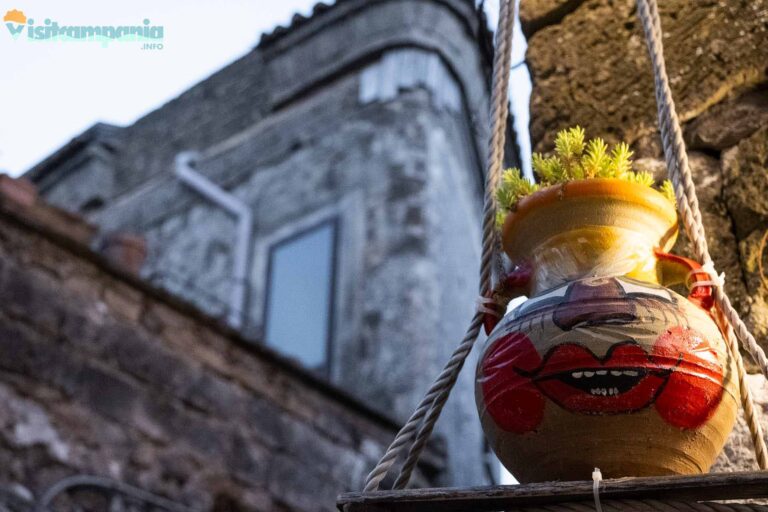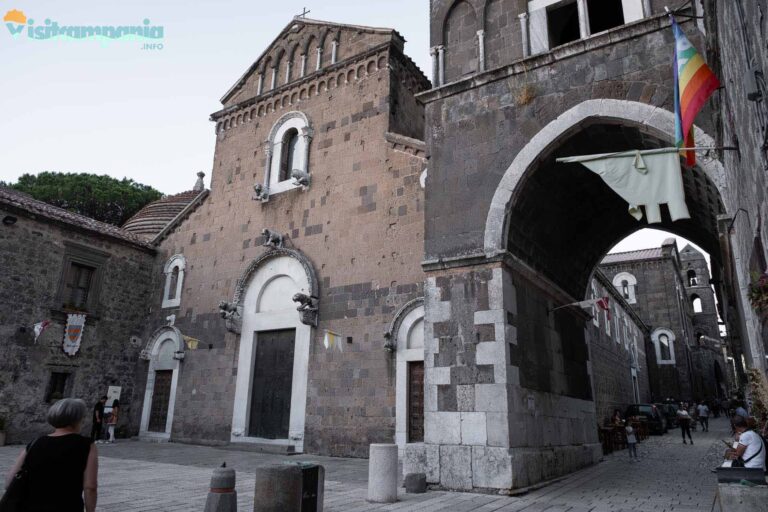What is Caserta Vecchia
Caserta Vecchia (also Casertavecchia) is a frazione of Caserta located on Mount Virgo, part of the Tifatini Mountains. It is about 10 kilometers from the center at an altitude of 400 meters above sea level. It is a medieval village that pre-existed the current Caserta , which is, instead, of eighteenth-century origins. Since 1960 it has been part of the Italian National Monuments, a list of places and buildings that bear witness to the history of Italy. Thanks to this, the village has managed to go beyond the state of abandonment and degradation into which it had fallen following the move of the Bishopric downstream in 1842 and to recover its ancient beauty. Today it is also home to numerous events held there, especially in summer. The most important of these is certainly the “September at the village” festival. It has been repeated for over 50 years and offers a rich program of events, mostly free, ranging from theater, to music, to literature.
On sultry summer nights, Casertavecchia also offers a bit of refreshment with air that is certainly cooler than the Caserta below.
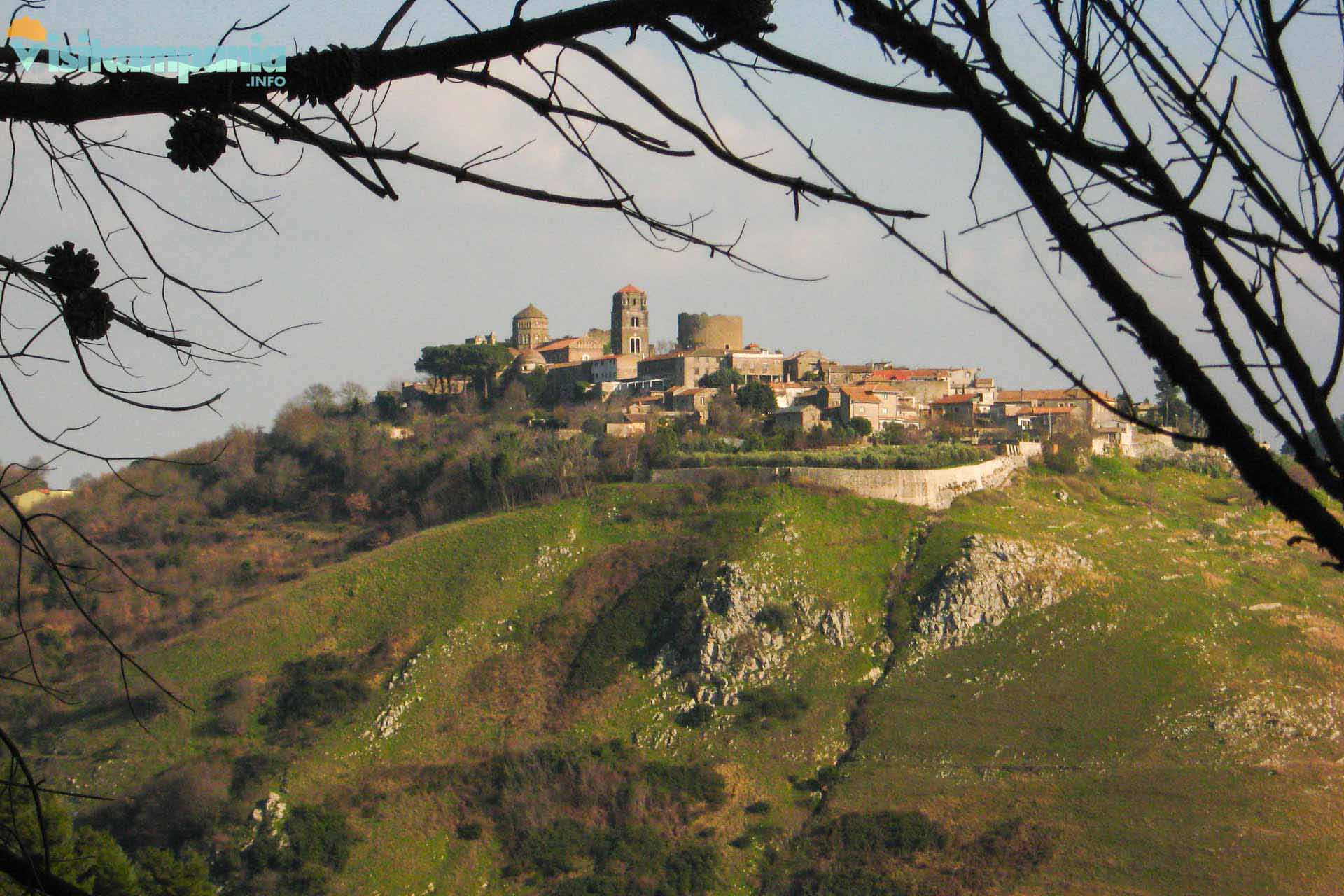
Things to see in Caserta Vecchia
The village of Caserta Vecchia is a small jewel that preserves, almost unaltered, its original medieval appearance. Regardless of specific places of interest scattered here and there among winding alleys and unexpected squares, it is the village as such that deserves a visit with its stone and tuff houses and suggestive views. In addition to this, the village still offers various places of interest:
- The Cathedral of St. Michael the Archangel
- The church of the Annunziata.
- The remains of the castle and the Tower of the Falcons
- The Chapel of San Rocco
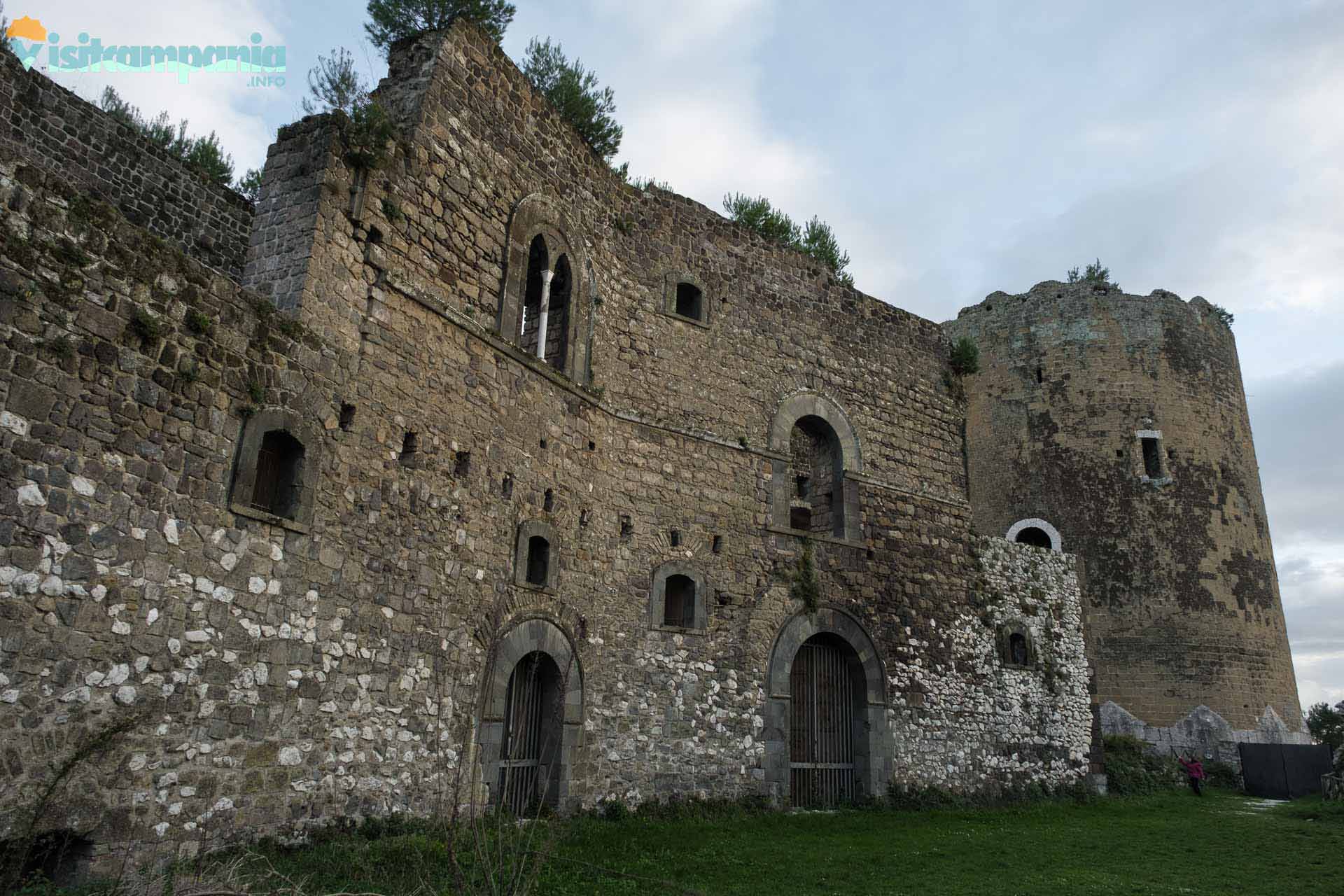
Alleys, squares and houses of the village
As mentioned, the first place of interest is the village itself. Preserving its original medieval appearance, Casertavecchia offers the opportunity for a relaxed journey through time. Among the winding cobbled alleys there are glimpses that change with every step and invite the visitor to enter the buildings.
Walk slowly and without fear of getting lost. The village is small and all the uphill streets lead better or worse to Piazza del Vescovado, the main square of the village. As you stroll, look out for portals that adorn the entrances of many homes, some of which are engraved with the names of previous owners. In addition, you will come across planters and recycled objects that, brought to new life, give a touch of joy to the austere alleys of the village.
If you have the chance, plan your visit in the evening hours just before sunset (at dawn the same situation is repeated but it is more inconvenient!). You will thus have the opportunity to savor Caserta Vecchia in three distinct atmospheres. First the golden hour, that particular moment of day when, just before sunset and for about an hour, the light takes on intense warm and golden colors. Then, for a few minutes, everything turns blue. Finally, once this magical moment has passed and the street lamps are lit, the luminous reflections on the polished stone permeate the atmosphere with mystery and magic.
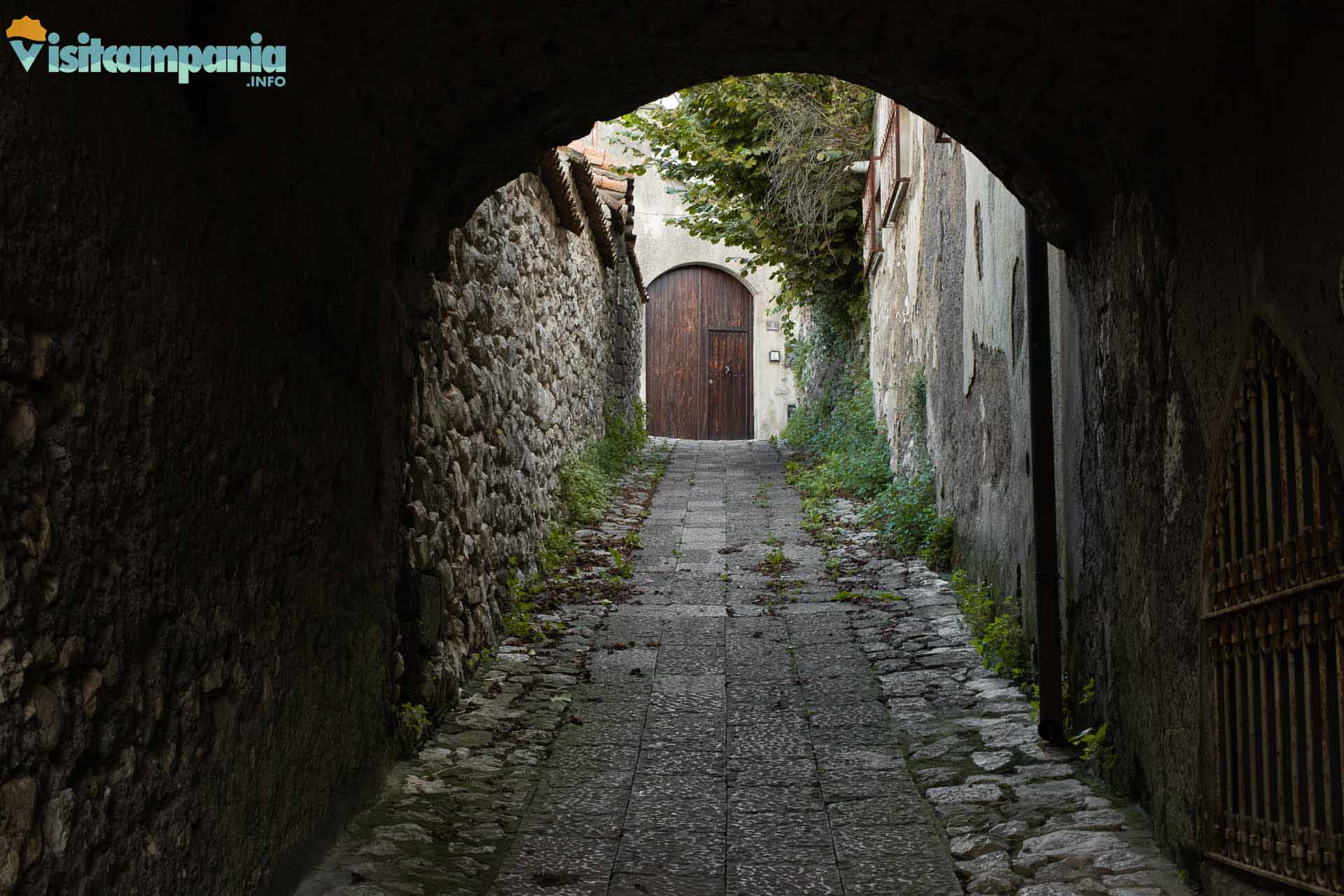
Piazza del Vescovado in Casertavecchia
It is the main square and one of the most evocative places in the village. It houses the splendid Cathedral of St. Michael the Archangel, in Sicilian-Norman style, and the bell tower. The latter, supported by a large ogival arch, rises on the main street of Caserta Vecchia that passes under it. The tower, which dominates the square from the height of its 32 meters, has an unusual octagonal belfry with cylindrical turrets and rests on two floors of mullioned windows and a first level decorated with blind crossed arches.
The square is completed by the former bishop’s palace, on the right side overlooking the cathedral, the former seminary palace, in front of the cathedral, and the rectory on the left side. All the buildings, built between the twelfth and seventeenth centuries, preserve their original appearance well, although the bishop’s palace and the seminary now house commercial activities. The rectory, on the other hand, is still intended to house the parish priest and, originally, was used to directly connect the seminary to the cathedral. Beyond the door of the building you can see a wrought iron cross in Lombard style , made, however, only in 1953 in commemoration of the 700th anniversary of the consecration of the Cathedral to the cult of St. Michael the Archangel.
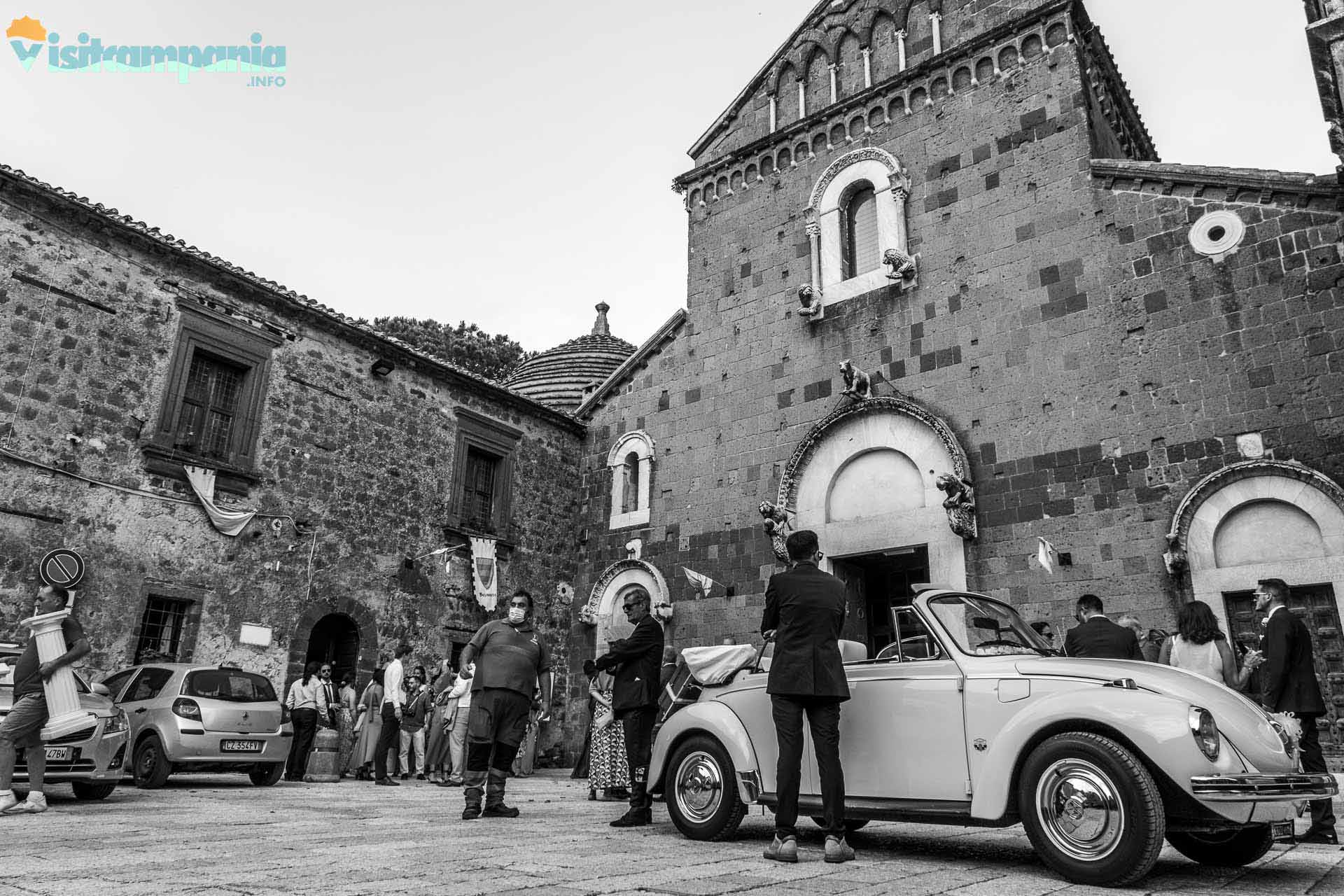
The Cathedral of St. Michael the Archangel
Construction of the cathedral began in 1113 and was completed in 1153, as indicated by an inscription on the lintel. However, there was no lack of subsequent interventions, especially in the Baroque period (sixteenth and seventeenth centuries). It has a wealth of architectural styles ranging from Sicilian-Norman to Romanesque to Gothic to influences from the Benedictine style of Montecassino. The external façade, in which the three-nave structure can already be glimpsed, is made of lava tuff and is decorated with floral and animal motifs typical of the Middle Ages.
Inside we find a plan with three naves, with the central nave covered by trusses that extends for 46 meters deep. It is flanked by 18 marble columns, coming from a Roman temple, surmounted by Corinthian capitals, a single Ionic capital between them, and round arches.
Behind these columns, there is a mysterious legend. It seems, in fact, that they would have been transported to the top of the village by the fairies of the Tifatini mountains, who would have loaded them on their shoulders and carried them to the top.
Another valuable element is the pulpit, built in the seventeenth century using fragments of thirteenth-century mosaics. The structure is supported by five columns, two of which are carved with the figures of Jeremiah and a Jew bitten by the snake.
Beyond the pulpit is the transept with three apses, added in the thirteenth century. It is covered by cross vaults and a large octagonal dome on the presbytery and houses two fourteenth-century tombs, one on each side.
Also pay attention to the holy water font at the entrance, made from a fourth-century Corinthian capital, and the numerous medieval and Renaissance tombstones .
On the left side, just beyond the entrance, there is a small Renaissance chapel that still preserves fragments of the original frescoes. With the exception of a Virgin and Child dating back to the fifteenth century, visible at the end of the right aisle just before the transept, they are the only survivors of the decorative replacement that took place in the Baroque age, which in turn was removed in the twentieth century.
Finally, from Piazza del Vescovado and the Castle you can admire the lantern, an architectural structure that encloses the dome. With clear Sicilian-Norman influences, it has an octagonal structure decorated with two floors of intertwined blind arches, characterized by the alternation of yellow and ash gray stones.
On the left side of the cathedral, also from the outside, there is another original conical structure with steps, similar to a dome. It’s the roof of the Renaissance chapel that you’ve already seen inside.
The church is open every day. In winter, from 9 a.m. to 1 p.m. and from 3.30 p.m. to 6 p.m. In summer, from 9 am to 1 pm and from 3.30 pm to 10.30 pm.
For up-to-date information, please call +39 0823 322493 and +39 0823 37131 or send an email to info@parrocchiacattedralecaserta.org. Admission is free.
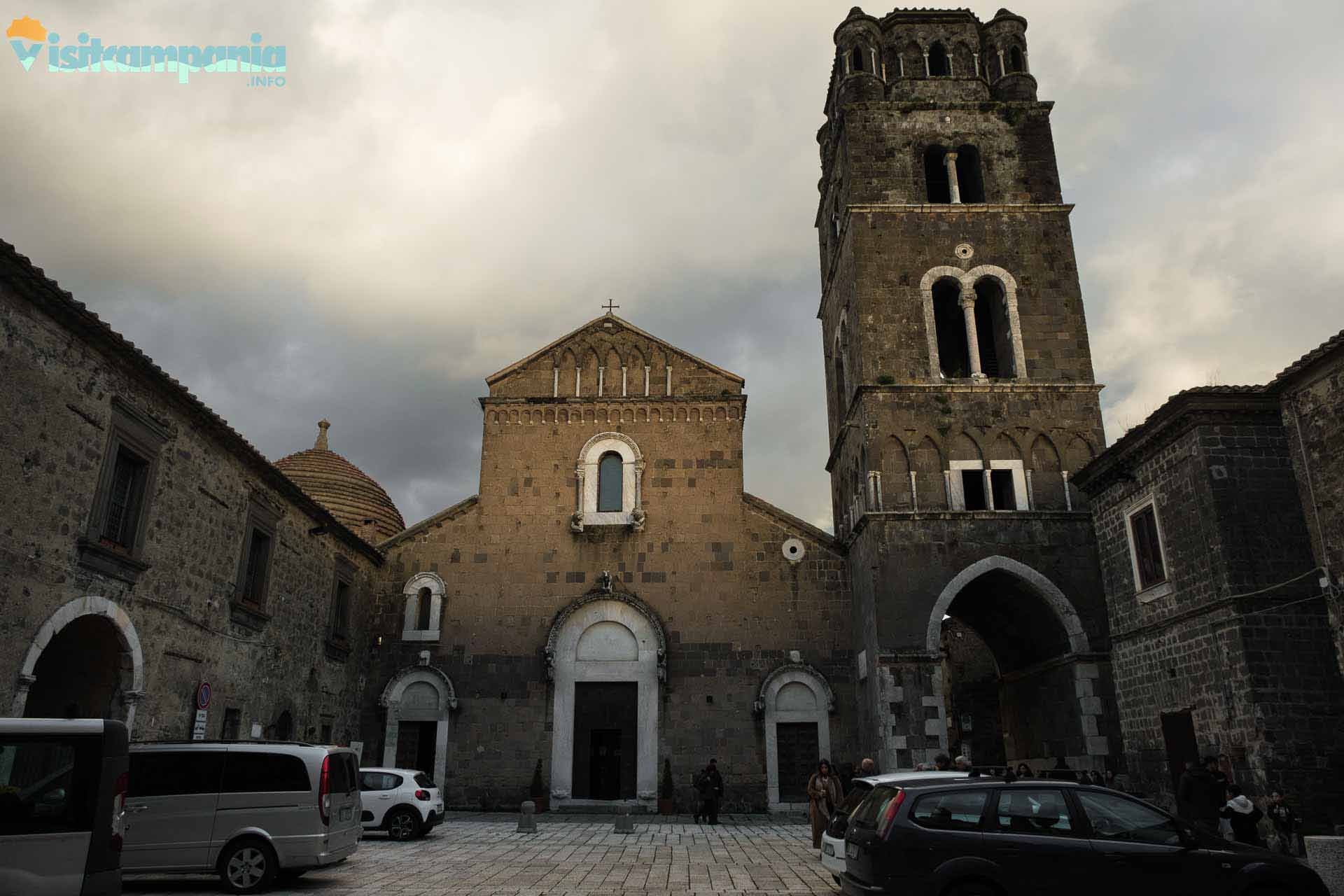
The Church of the Annunziata
After passing Piazza del Vescovado, proceeding under the bell tower in the direction of the Castle, a few meters separate you from the Church of the Annunziata.
It is a small medieval church in tuff and stone, dating back to the thirteenth century, in Gothic style although there are later Baroque elements such as the entrance portal. Like the nearby cathedral of St. Michael the Archangel, it has its own bell tower, on four levels, clearly visible from the small road that leads to the Castle. To appreciate the façade, characterized by a porticoed atrium inserted in an arch surmounted by three single-lancet windows and a small rose window, you must, instead, enter a few meters into the alley in front of the entrance.
The interior, with a single nave and a trussed roof, is now almost devoid of decorations destroyed by a fire in 1903, a subsequent collapse in 1934 and the restoration of 1954 that brought the church to its current appearance. The presbytery, separated from the nave by a Gothic arch, is covered by a cross vault in Gothic style.
An important feature of the church was its patronage, probably of lay origin and linked to the entire community constituted in Universitas, a form of municipal organization ante litteram dating back to the Lombards. This explains why The church was assigned social functions which it fulfilled both directly, for example, the marriages of the poorest people were held there, and through the hospital attached to it (the building immediately after the bell tower characterized by a small niche with the remains of a fresco depicting the Annunciation) then suppressed by Ferdinand IV of Bourbon in 1776.
Admission is free.
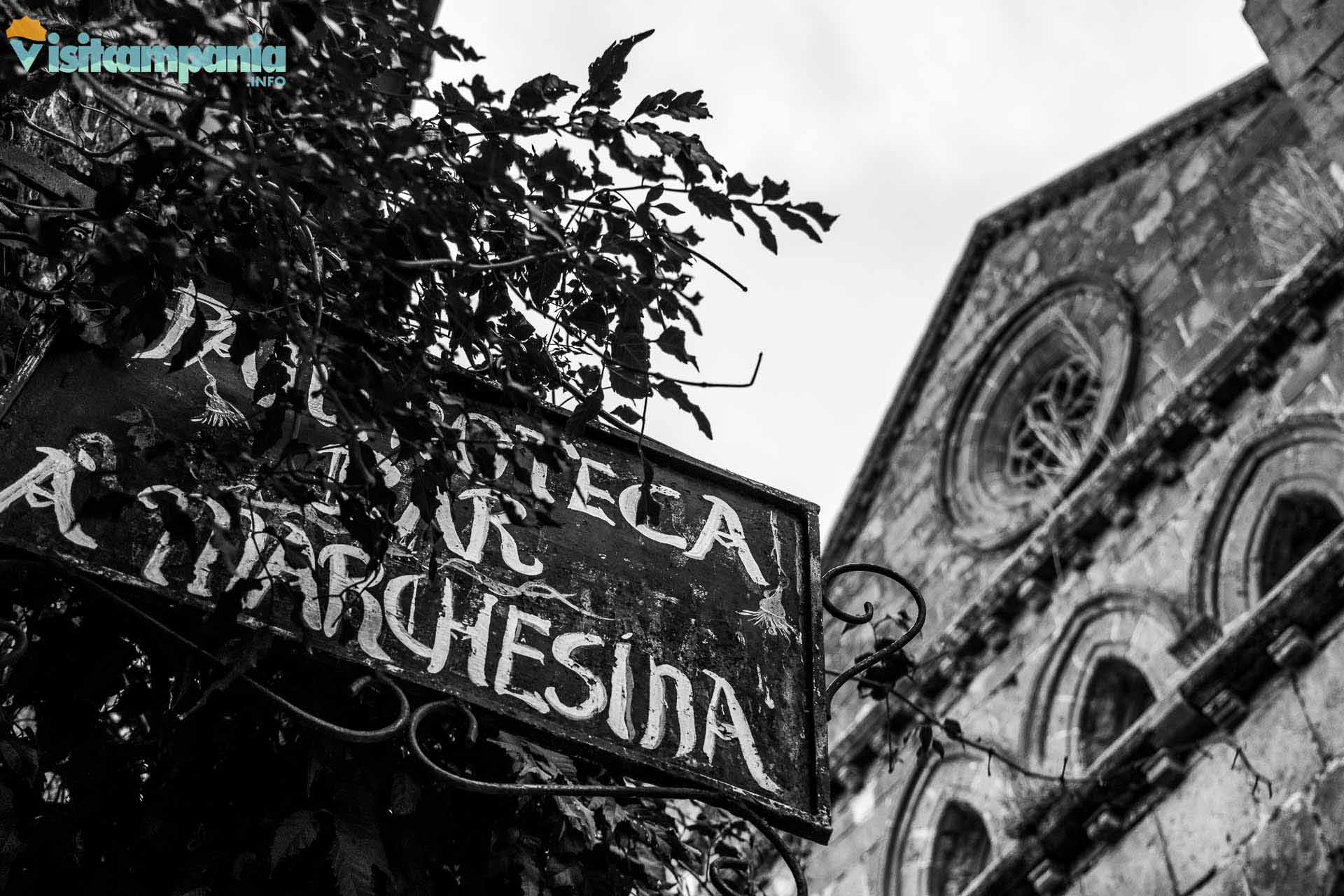
The remains of the Castle and the Falcon Tower
After passing the church of the Annunziata, continue on Via della Pineta. From here, just before the arch that delimits the access to the village, you will find an opening in the retaining wall on your left and a narrow staircase that soon leads you to the ruins of the Castle.
Built around 861 by the Lombard Counts of Capua, it stood to guard the village, on the highest point of the hill, and acted as a sentinel on the plain and valleys of Monte Virgo.
Although today it is in a state of ruins, you can still appreciate the irregular, approximately elliptical layout of the first castle.
Later it was enlarged and fortified by the Normans, first, and then by the Swabians.
In particular, in the Swabian period the complete renovation of the complex and the construction of the grandiose circular keep known as the Tower of the Falcons were commissioned.
With a height of about 30 meters and a diameter of 19.14 meters, the tower is one of the largest in Europe, second in diameter only to the tower of the city walls of Aigues Mortes in Provence.
It is articulated on three vaulted levels, but only the first was accessible from the outside via a drawbridge connected to the nearby castle. The upper room, intended for the nobleman, communicated with the entrance room, intended for the servants, through a stone staircase incorporated into the masonry. The lower compartment, on the other hand, was accessible only through a trapdoor and was intended for the storage of food.
Today, the facility is not accessible to the public, although several events are held there in the summer. However, when the gates are open, you can walk around the courtyard of the castle area for free, enjoying the charm and mystery that hovers there.
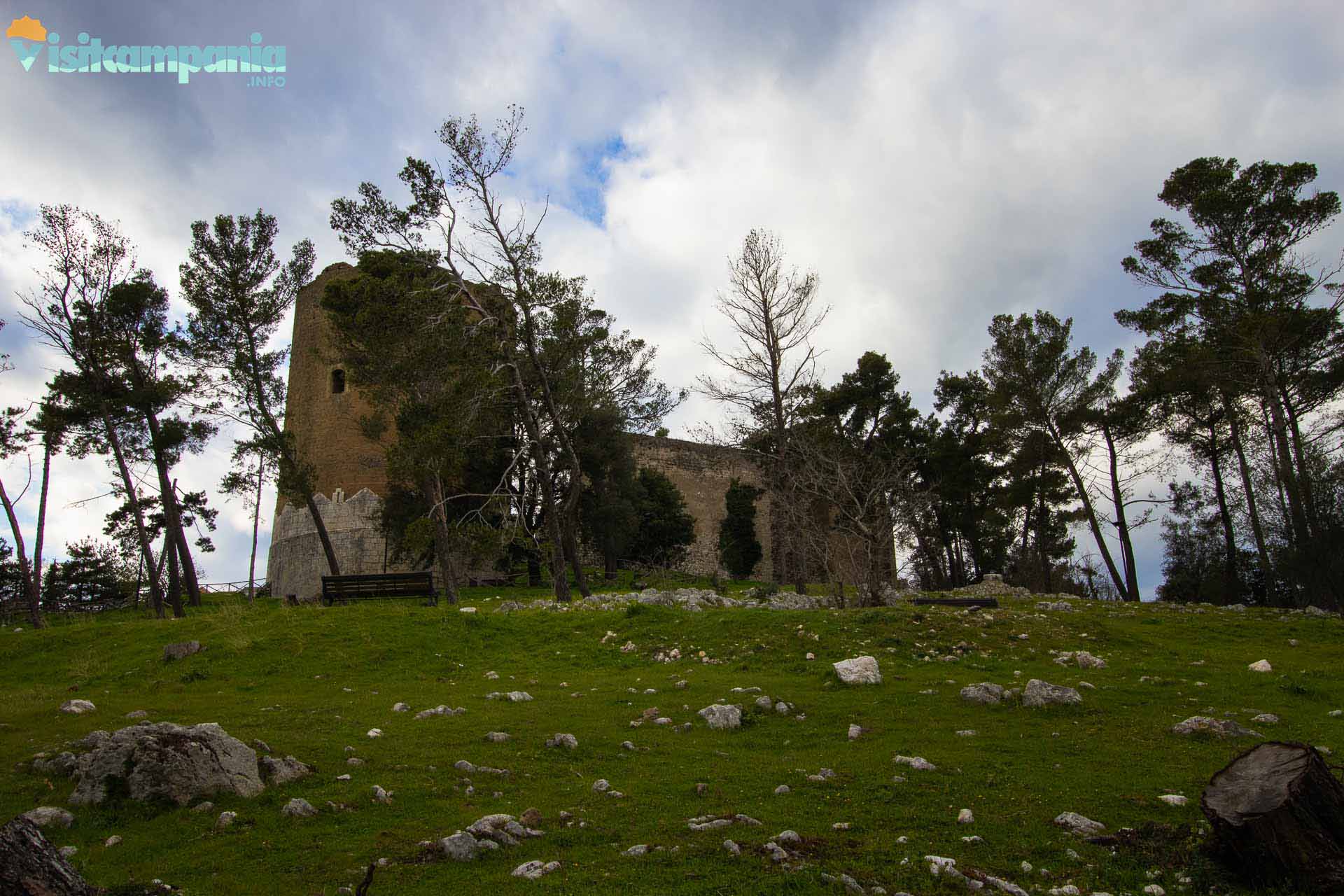
The Chapel of San Rocco
After visiting the remains of the Castle, you can return to Via della Pineta along the short dirt road that starts from the base of the Torre dei Falchi. Back on the asphalt stretch and at the end of the descent you will find yourself where you probably parked and where, a little further on, there is the last stage of the visit to the village of Caserta Vecchia. This is the small chapel dedicated to the cult of San Rocco, protector from the plague and other diseases.
The chapel, dating back to the seventeenth century, is characterized by a small external portico on the right side and a bell tower about 8 meters high. On the entrance door, in a niche, you can see the remains of a fresco of the Madonna and Child. Inside, unfortunately in a poor state of preservation, there are other frescoes dating back to the seventeenth century.
Admission is free.
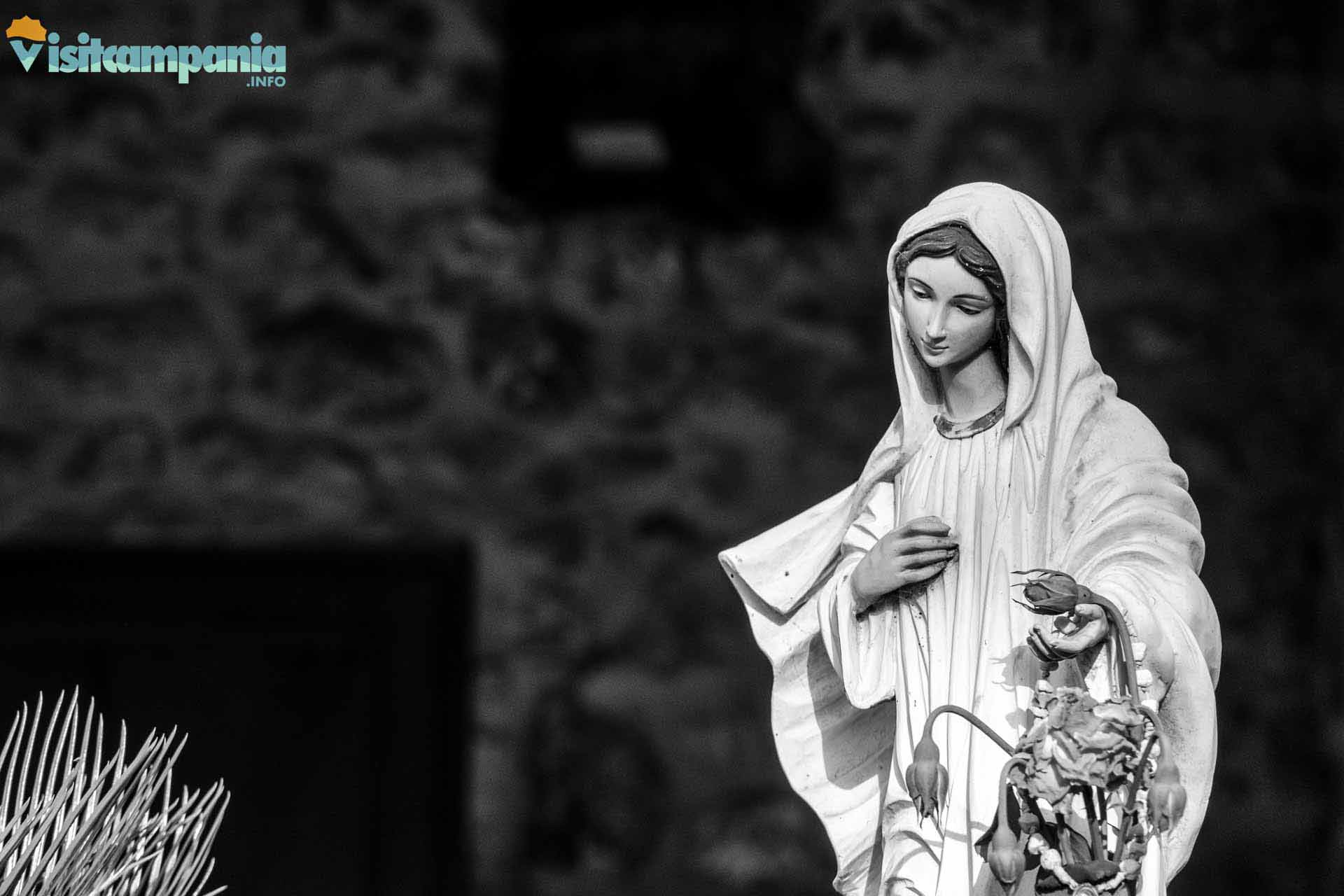
Caserta Vecchia, historical notes
Now that you have an idea of what the village can offer you, I’ll give you some historical notes just to better understand where what you can see today comes from.
The existence of an urban nucleus called Casa Hirta, i.e. a village located at the top, where Caserta Vecchia is located today, is attested with certainty as early as 861 in the Historia Langobardorum Beneventanorum by Erchempert, a Benedictine monk and Lombard historian who lived at the turn of the ninth and tenth centuries. However, it seems that the origins can be traced back to Roman times when there must have been a pagus in the area, that is, a rural administrative district gravitating around a place of pagan worship.
At the end of the nineteenth century, still in the Lombard era, the city entered the orbit of the Counts of Capua who fought over it to the sound of family conspiracies.
In the meantime, the Saracen raids in the plains below pushed the inhabitants and the clergy of the same to find safe refuge in Casertavecchia, for which a period of demographic and economic development began. Among the new inhabitants there are, above all, those of the disappeared city of Calatia, of Etruscan origin, then Samnite and Roman, located along the Appian Way in the current territory of the municipality of Maddaloni.
In 1062 the Norman domination began, which brought the village to the highest level of splendour with the construction of the current cathedral dedicated to St. Michael the Archangel.
Subsequently, following a common destiny in Naples and much of southern Italy, the village passed under the Swabian domination, with Riccardo di Lauro (1232-1266), who increased the importance of the village also from a political point of view.
In 1442 the Aragonese arrived and began a long and progressive decline that was not interrupted even by the subsequent advent of the Bourbons. Indeed, it is precisely under the latter that Casertavecchia suffers the most decisive blows of its decline. In 1776 the Annunziata hospital was closed at the behest of Ferdinand IV and in 1842, by decree of Pope Gregory XVI, the bishopric and seminary were transferred to the valley.
This brings us to the middle of the last century. Caserta Vecchia languished in decay and abandonment when, in 1960, it was included in the list of Italian National Monuments, established by a law of 1866 that gave the Government the obligation to preserve them.
Thus began a new chapter in the history of the village which, although only from an aesthetic point of view, slowly recovered much of its ancient splendor.
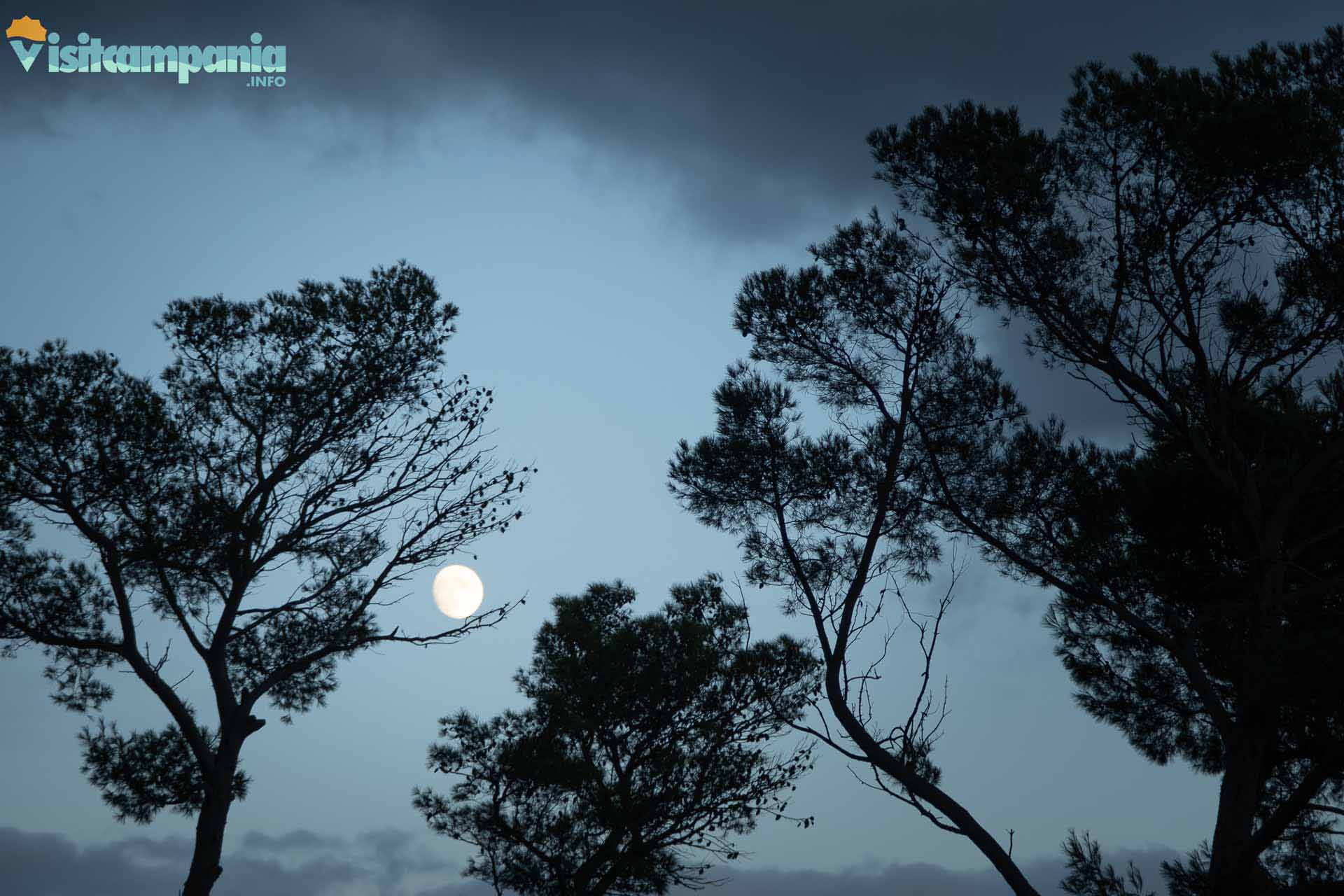
Ghosts and Sprites in Caserta Vecchia
Like any self-respecting medieval village, Caserta Vecchia also boasts several supernatural presences.
The first of these is the ghost of Countess Siffridina. The Countess, wife of Tommaso di Lauro, Count of Caserta, was the mother of Riccardo Sanseverino who married the daughter of Frederick II of Swabia, Violante.
After Richard’s death, his son Corradello was persuaded by his grandmother Siffridina to rebel against the French and support Conrad of Swabia. However, after the latter was defeated by Charles of Anjou in the battle of Tagliacozzo made famous by Dante Alighieri, the countess was arrested and sentenced to life imprisonment in the Swabian Castle of Trani. Here she died at the age of 80, fed only on bread and water. Although his body remained there, it seems that his spirit has returned to his beloved Casertavecchia where it wanders between the cathedral and the castle on winter nights, emitting mournful wails.
The other supernatural presence is due to the Mazzamaurielli family, who are not exclusive to Caserta Vecchia. They are fantastic creatures of the folkloric-fairy tale tradition common, with various names, to many Italian and even European regions.
The mazzamauriello has the habit of banging against the walls of the house to be noticed. From this characteristic derives the name, a combination of mace (shot) and murello (walls). So, if you’re staying in Caserta Vecchia, don’t be scared if you hear unusual noises in the house. On the contrary, in popular tradition the presence of a mazzamauriello is a sign of good luck. It can signal proximity to a treasure or, more commonly, is considered a messenger between the ordinary world and the enchanted world.
This tradition is linked to an object of local craftsmanship, the Spiritello di Casertavecchia. It is a colorful terracotta jar with a goblin painted on the top, perhaps the mazzamauriello, which is attributed with the power to bring good luck.
The history of the sprites is linked to Ursula, a German woman in love with the village of Caserta Vecchia who decided to move here in the 70s. He bought the ruins of a small house, originally the fifteenth-century church of San Pietro, which he transformed into the House of the Mullioned Window, so called because of the two mullioned windows on the façade. Once the restoration work was completed, he opened a workshop where he began to make jars. It was, however, a psychic friend of hers who renamed them sprites, sensing the presence of benevolent souls in Ursula’s house.
If you are curious to see the House of Mullioned Lights up close, where the sprites were born, you can continue on Via Annunziata with the Cathedral behind you and after a few meters, when the street changes its name to Via San Michele Arcangelo and the descent becomes steeper, you will find it on the left.
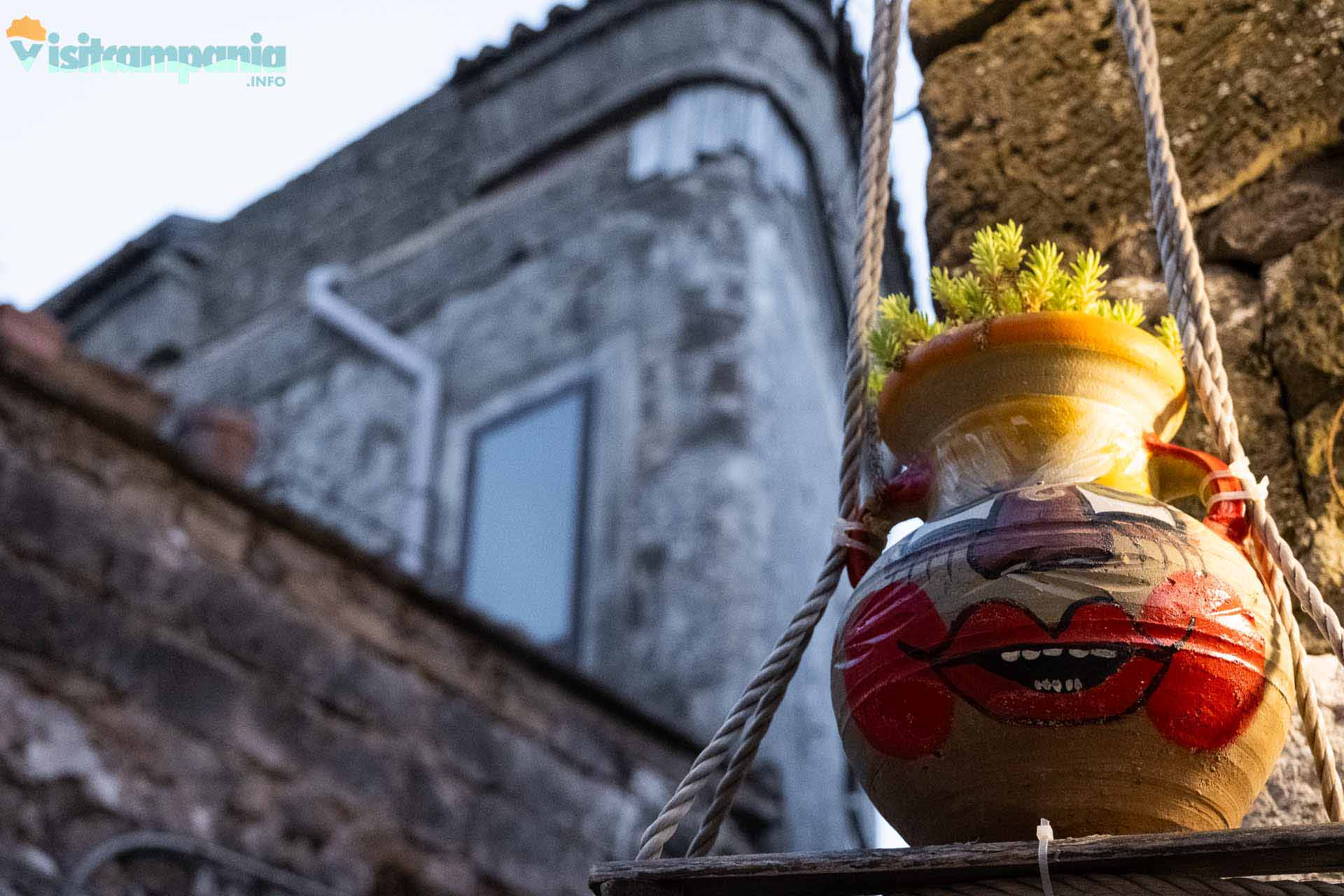
Tips and curiosities
- Several scenes of the 1971 film “The Decameron” were filmed in Casertavecchia and, in particular, the scenes of the novella “Andreuccio da Perugia”. The film, inspired by Giovanni Boccaccio’s opera of the same name, was written and directed by Pier Paolo Pasolini;
- More recently, several episodes of the TV series “My Brilliant Friend” based on the homonymous series of novels by Elena Ferrante were also filmed here. The series, broadcast in Italy by RAI, was a huge success and was also translated and distributed abroad;
- On the top level of mullioned windows of the Cathedral’s bell tower, on the west side overlooking Piazza Vescovado, you can see the sculpture of a human face that has, surprisingly, the features of Benito Mussolini. This is surprising when you consider that the tower was completed in the thirteenth century;
- I have already told you that the 18 capitals inside the Cathedral are all in Doric style except for one which is in Ionic style. Can you find it?
To learn more
- Casertavecchia TRG (video);
- Casertavecchia – Camper RAI (video);
- Cathedral of Casertavecchia (video);
- Caserta Vecchia walking tour (video);
- Casertavecchia – medieval village (video);


